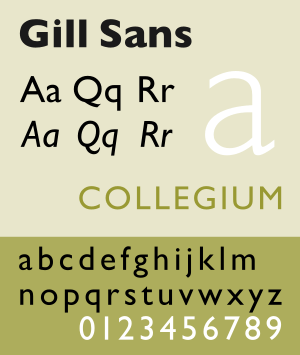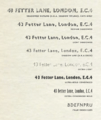Gill Sans facts for kids
Gill Sans is a well-known sans-serif typeface (a type of font) that was created by a British artist named Eric Gill. It was first made available by the British company Monotype starting in 1928.
Gill Sans is based on an older font called the "Underground Alphabet." This font was designed by Edward Johnston in 1916 for the London Underground (the subway system in London). Eric Gill actually helped Johnston with some of the early work on that font when he was a young artist.
How Gill Sans Was Created
In the 1920s, Eric Gill became famous as a stonemason, an artist, and someone who designed letters. He started working on his own typeface designs. A friend of his, Stanley Morison, who worked at Monotype, asked Gill to turn his alphabet ideas into a full set of metal type. Morison hoped this new font could compete with popular German sans-serif fonts like Futura.
Monotype released Gill Sans in 1928. Eric Gill wanted to mix ideas from Johnston's font, classic fonts with little "feet" (called serifs), and old Roman writings like those found on Trajan's Column. His goal was to create a font that looked both modern and classic at the same time.
Where You Might See Gill Sans
Gill Sans became very popular and was used for many different things. For example, it was used by the LNER for their train signs and even on the famous locomotive Mallard. The BBC also used a logo based on Gill Sans for many years. You might also see it on old Penguin Books paperbacks.
Images for kids
-
A drawing by Eric Gill of the letters from the Column of Trajan. These ancient Roman letters helped inspire Gill Sans.
-
An old enamel sign at Lowestoft Central station using a standard British Railways font.
-
Gill Sans used on a menu from an LNER hotel in York in 1940.
See also
 In Spanish: Gill Sans para niños
In Spanish: Gill Sans para niños





















